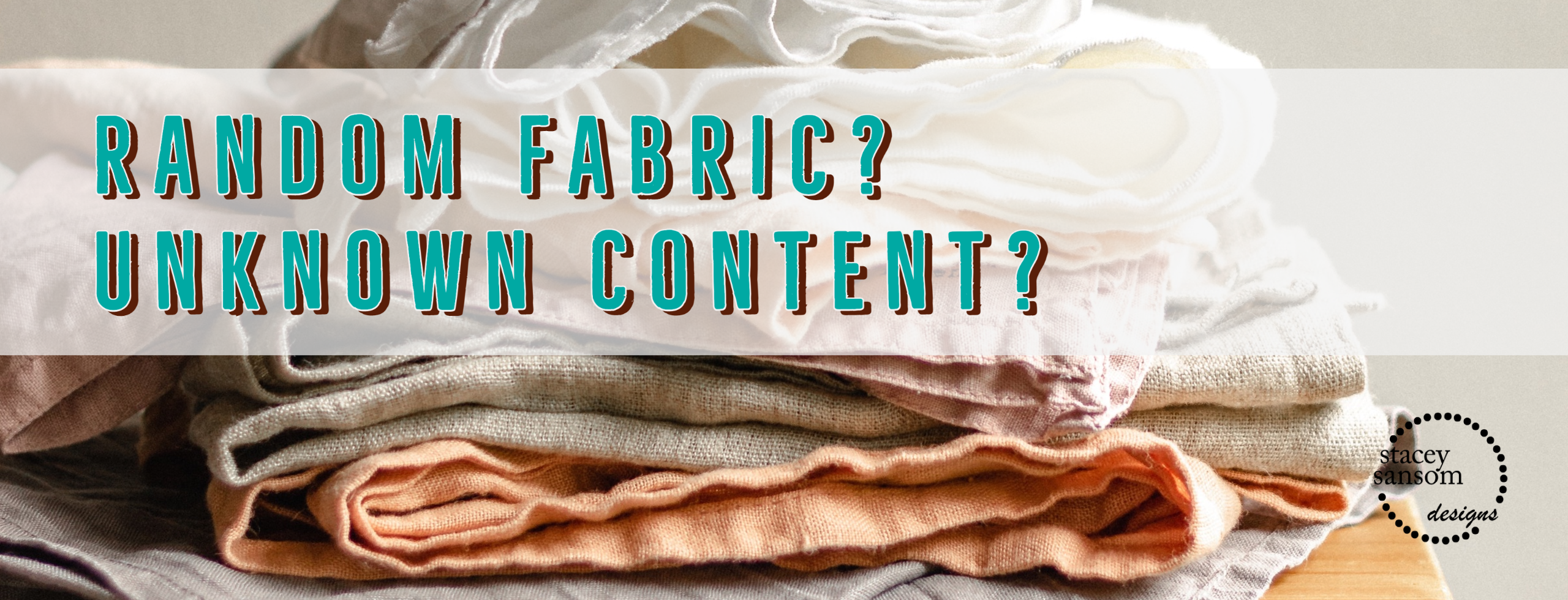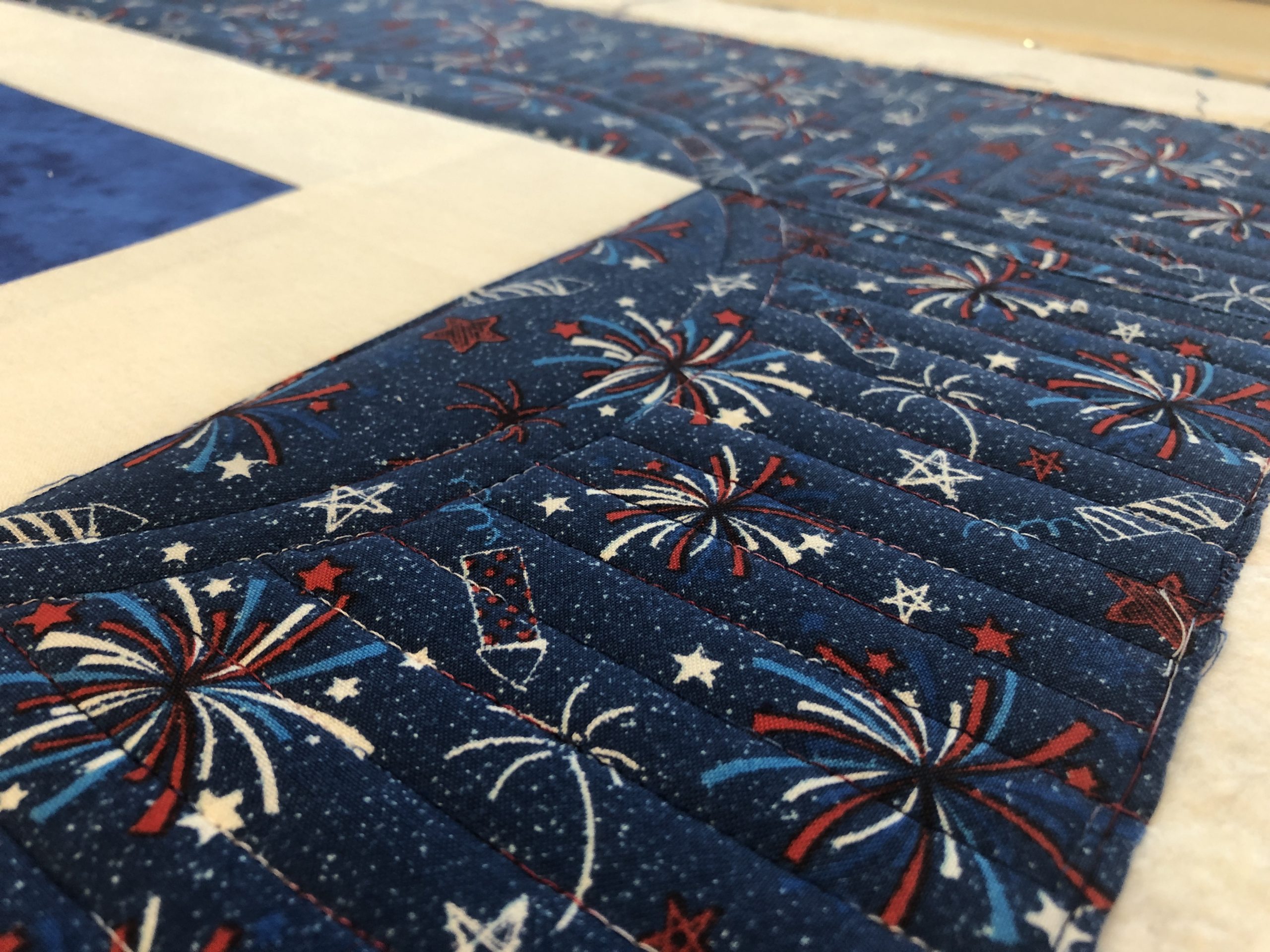
I have received multiple questions about whether or not a particular fabric is okay to use when sewing or quilting. Most often it comes with quilting as its primary context. There are many reasons why people ask, “Is it okay to use?”
Possible scenarios include:
- They are an absolute beginner sewist and had no idea there was a difference. They bought what was cheap.
- An individual received a bag of scraps of unknown origins.
- Someone thrift shops for clothing to use as fabric scraps.
- You really like the print or pattern on the fabric, but it is a cotton-poly blend.
- Someone told them they could only use 100% cotton on their quilts.
There are numerous other scenarios that leave people looking for answers to if a particular fabric is safe to use while quilting.
Many will not agree with me on this one…Use the fabric!
Use the fabric
We can drive ourselves crazy thinking about fabric content and thread content. We can go cross-eyed figuring out if something is natural fiber or synthetic fiber.
When quilting started many eons ago…
No one cared! How do I know this? You have to think about the times. What was available? They did not have the quandary of deciding between cotton-polyester blends or polyester microfiber fabrics. Many of these are modern-era inventions.
Let me make a side statement that there are times when fabric types do matter.
If you are making a dress from a pattern designed for woven fabrics and you want to use a knit fabric, the results will likely not be what you want or expect. In this case, use the woven. Likewise, if the pattern is for a knit fabric, and you have a woven fabric your item is going to not fit properly. Most likely, it will be too small because knit does not require the same amount of ease built into the pattern as woven does. It stretches, woven does not. Let me take it a little bit further, if the pattern is designed for flowing fabrics, choosing a heavier weight or stiffer fabric is not going to give you the same look.
In general with quilting, I say, “break the rules and give it a try.” Just be aware that you may have to make some accommodations to account for the fabric choice.
History of polyester fabrics
Nylon was discovered in the mid-1920s by Wallace Carothers. While the beginning of polyester polymers was a brilliant invention, it was inherently unstable. Carothers didn’t even see his nylon discovery carried to fruition, but his early discoveries eventually lead to the patent of PET (polyethylene terephthalate) which became the basic building block for synthetic fibers.
By the mid-1940s, DuPont stepped in and bought all the rights to the nylon material. They developed it further and created Dacron and Mylar. This early polyester fabric was considered a “miracle” and changed the lives of millions of housewives everywhere. Why? It did not wrinkle or show signs of wear! How amazing that must have been in a world where everyone ironed everything.
Low maintenance is what drove this fabric to widespread popularity by the late 10950s. The side bonus was that it was cheap to produce while maintaining durability. Unfortunately, it was not as comfortable to wear as natural fibers. It was notoriously hot.
Today, 100% polyester still has a bad reputation. This might be rightfully so given the fabrics of the 70s and 80s. However, polyester blends are very common and are still popular today. These blends often help strengthen the fabrics made with natural fibers such as wool and cotton thus yielding them a bit more durable than their 100% natural fiber counterparts.
Widely available
Now think about things that are widely available. It is not always 100% cotton fabric pieced together with 100% cotton thread sandwiching 100% cotton batting. Widely available items such as quilts, bedspreads, and duvet covers (to name a few) are often polyester or a polyester blend.
I know that personally one of my favorite bedspreads is 100% polyester! It doesn’t wrinkle. It looks good wash after wash. The colors don’t fade as quickly. It doesn’t stain. It is cool in the summer and warm in the winter (maybe with an extra blanket). It is lightweight. It is soft and pliable. It is has a smooth texture against the skin. I can go on and on.
Due to the widespread availability, it could be the affordable option to many sewing makers. I want to assure you right here, right now, it is acceptable and you should embrace the tag of “Do not use” and rip it right out of your metaphorical quilting rules mattress.
Less stress. More quilts.
If we stress less about the things that we cannot change or simply do not want to change, then we can focus on the things that matter most.
For me, that would be turning out more quilts each year. I want my kids to remember me through the love and stories each quilt holds and tells. I do not want them to only remember the stress. I do not want them to focus on how fabric stores became fewer and harder to find. I want them to remember I kept creating in spite of this. I do not want them to ever believe that I skipped a spontaneous lunch date with them because I spent all the extra funds at the quilt shop. I want them to know that I can create and still spend those precious moments and opportunities with them.
How many projects have we put off because the only fabric we could find that had the perfect “design” on it was a cotton-poly blend? How many projects have we put on hold because we could not find the perfect match in the cotton thread section? How many projects have we put off because we could not afford a new sewing machine and our current machine causes constant thread breaks with cotton threads?
Do not put it off any more!
Just use the fabric. Use the thread. Make the quilt. Sew the dress. Simply make!
Polyester: Not Just Your Your Father’s Leisure Suit
The History of Polyester
The Interesting History of Polyester Fabric



